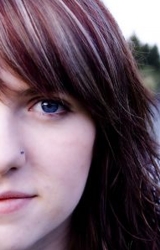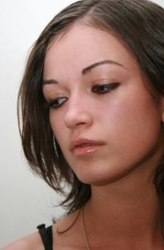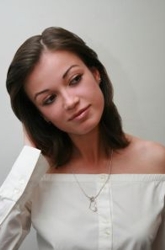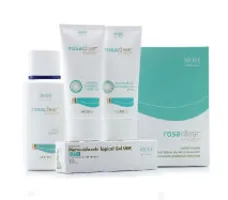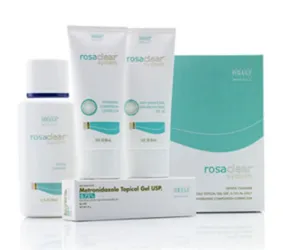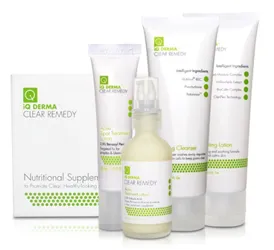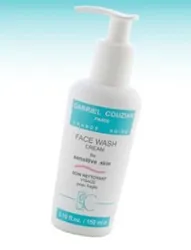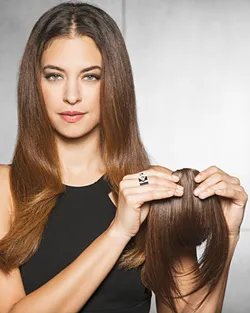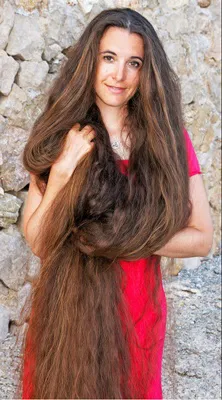
Controlling Acne And Rosacea
Introduction
Acne and rosacea are two seemingly different skin conditions that have one important thing in common: both are chronic and extremely common skin conditions. However, dermatologists recommend that with proper diagnosis, treatment and a healthy dose of good, old-fashioned skin care, acne and rosacea can be less of a nuisance for patients. Speaking at the 68th Annual Meeting of the American Academy of Dermatology (AAD), dermatologist Jenny J. Kim, MD, PhD, FAAD, associate professor of dermatology at the University of California, Los Angeles, (UCLA) David Geffen School of Medicine in Los Angeles, discussed the latest treatments for acne and rosacea and how ongoing research into the causes of these conditions holds promise for future therapies. Dr. Kim said "Sometimes it is hard for patients dealing with acne or rosacea to understand why, even with ongoing treatment, they cannot get rid of their symptoms forever." He continued "I explain to them that these conditions are similar to having any chronic disease, like having diabetes – there is no cure yet, but we can control the symptoms. Just like insulin helps maintain a diabetic's blood sugar, patients with acne and rosacea need to find a treatment regimen that works for them to maintain clear skin.” Acne: An Equal-Opportunity Skin Condition
It is estimated that 40 million to 50 million Americans are affected by some form of acne. While acne is commonly associated with teenagers struggling with the growing pains of adolescence, this skin condition can strike at any age. In fact, Dr. Kim emphasized that it affects adults in their 20s, 30s, 40s and even in their 50s, especially in women and even in people who never had acne as teenagers. The causes of acne include excess oil production, skin inflammation, skin cells in the hair follicles that shed too quickly and an increased number of the acne-causing bacteria Propionbacterium acnes. However, hormones also influence both oil production and the shedding of skin cells, thereby contributing to the formation of acne lesions. For example, when androgens (the male hormones present in both men and women) over-stimulate the oil glands and hair follicles in the skin, hormonal acne flares can occur. In the past, most cases of acne were treated solely with antibiotics. While these treatments can be very successful, a growing concern about long-term antibiotic use is that bacteria are evolving to become resistant to these medications. As a result, the development of other effective therapies and combination therapies has evolved. New Acne Therapies
For example, Dr. Kim noted that some of the newer therapies for acne are anti-inflammatories, which can be used in some cases to lessen the severity of acne. Controlled-release of lower dose doxycycline is a newer anti-inflammatory oral medication that some dermatologists use to reduce the redness and swelling of acne. Combination therapies, which may include an anti-inflammatory and antimicrobial effects that can decrease resistance and are more convenient to use for patients, has made combination therapeutics increasingly common treatments used to manage acne. Another newer approach to treating acne is the use of lasers and light-based technologies as a complementary treatment to traditional medical therapies. Dr. Kim noted that these technologies include the pulsed-dye laser, red and blue light, and photodynamic therapy, which target the sebaceous (or oil) glands and can reduce acne flares. While Dr. Kim does not recommend lasers and light-based technologies as first-line therapies for acne, she believes it is a promising new area of research.
"Patients are becoming increasingly concerned about the long-term use of oral medications to fight acne, so lasers and light sources appeal to them,” said Dr. Kim. “The problem is that there are limited large, prospective, well-controlled studies that demonstrate the effectiveness of laser and light technology at this point, so that will be an area we need to explore in the future. It’s very likely that with the advancement in dermatologic research, we will see sebaceous gland targeting lasers in the future that will be effective for the treatment of acne.” Dr. Kim added that many patients are concerned about scarring that can result from acne, and many acne scars can be very aggressive and difficult to treat. For mild scarring, retinoids, chemical peels, microdermabrasion, and lasers can give mild improvement. In addition, fillers can be used successfully to fill in depressed areas and improve the appearance of scars. Another therapy that is approved by the Food and Drug Administration (FDA) for acne scarring is fractional laser resurfacing. This laser technology works by targeting damaged skin in columns of microscopic treatment zones, which include the outermost and underlying layers of skin known as the epidermis and the dermis. Fractional laser resurfacing thermally damages the tiny columns of scarred skin while the surrounding healthy skin is left intact. Dr. Kim said "One of the main benefits of fractional resurfacing is wound healing and increased collagen production that reduces acne scars.” He said “However, most patients will notice only a modest improvement in acne scarring and multiple treatments are required.
For more severe scarring, such as deep 'ice pick' scars, several acne surgical procedures can be used – including punch grafting or punch excision – to remove, raise, fill or separate the scar tissue from the underlying skin. These surgical procedures in combination with other therapies, including lasers and fillers, can produce improvement for severe acne scarring.” Rosacea Triggers and TreatmentsRosacea, another chronic skin condition, affects an estimated 14 million people in the United States and is characterized by redness, flushing and prominent blood vessels on the face. Dr. Kim explained that rosacea commonly occurs in older people, and there are many known triggers for this bothersome condition – including sunlight, alcohol, spicy foods, caffeine, heat, citric acid, and stress. While the exact cause of rosacea is not fully understood, Dr. Kim noted that a recent study suggests that the presence of an abnormal peptide (a small protein) in the skin of rosacea patients may contribute to the disease. "There is some evidence to suggest that the peptide cathelicidin within the skin is processed differently in rosacea patients than in individuals not affected by rosacea and induces inflammation that may contribute to rosacea,”explained Dr. Kim. "These findings are encouraging, as we can identify better treatments for the disease if we have a better understanding of what the cause might be."
Over the years, lasers have been shown to be effective in treating the symptoms of rosacea. For example, Dr. Kim mentioned that pulsed-dye lasers work well for rosacea patients with lots of broken blood vessels, and both pulsed-dye laser and intense-pulsed light treatments are effective at treating redness on the face and flushing associated with rosacea. "Patients undergoing laser therapy for rosacea will likely need multiple treatments. However, I have found lasers and light treatments to be very effective and produce long-lasting results,” said Dr. Kim. In addition to oral treatments, a number of topical medications have been introduced to treat rosacea, and Dr. Kim explained that metronidazole and azeleic acid are two topicals that are tolerated well and effective in reducing the symptoms of rosacea. Good Skin Care: Good for AllFor patients with acne or rosacea whose skin is often sensitive, Dr. Kim emphasized that proper skin care is very important as part of their overall treatment regimen. In addition to avoiding products or behaviors that tend to make acne or rosacea worse, patients may find that gentle skin care can help alleviate some of the redness or irritation common with these conditions. “I advise my patients to use a mild cleanser and sun protection that is non-irritating to the skin every day, particularly a moisturizer that contains sunscreen,” said Dr. Kim. “While skin care products containing too many acids can be irritating to sensitive skin, I find that products containing salicylic acid are useful for some acne patients. Separating treatments, such as using salicylic acid or benzoyl peroxide in the morning and a retinol-based product at night, might be helpful for patients with sensitive skin.”
Dr. Kim also noted that while over-the-counter products containing salicylic acid or benzoyl peroxide may help control mild acne, patients should avoid using too many products at once on their skin to try to manage acne. “The old adage ‘less is more’ applies to patients with sensitive skin,” said Dr. Kim. “The best advice is to discuss your skin care regimen with your dermatologist who can recommend products based on not only your specific skin condition, but your individual skin type as well.” Learning More About Acne And RosaceaTo learn more about acne and rosacea, visit www.skincarephysicians.com, a web site developed by dermatologists that provides patients with up-to-date information on the treatment and management of conditions of the skin, hair and nails. Headquartered in Schaumburg, Ill., the American Academy of Dermatology (Academy), founded in 1938, is the largest, most influential, and most representative of all dermatologic associations.
With a membership of more than 16,000 physicians worldwide, the Academy is committed to: advancing the diagnosis and medical, surgical and cosmetic treatment of the skin, hair and nails; advocating high standards in clinical practice, education, and research in dermatology; and supporting and enhancing patient care for a lifetime of healthier skin, hair and nails. For more information, contact the Academy at 1-888-462-DERM (3376) or www.aad.org. Social Media Network InformationPlease follow me on Twitter at: http://Twitter.com/HairBoutique. I look forward to meeting new people from all walks of Twitter and learning from their Tweets. Visit us at Hairboutique.com located at: http://www.HairBoutique.com, on Facebook, MySpace and YouTube. Please visit us at The HairBoutique Blog. We appreciate your comments. We apologize in advance but must remove any direct advertisements or solicitations. | ||||||||||||||||||||||||
| If you want to talk more about this or other hair care articles on HairBoutique.com or anywhere else, please post a message on HairBoutique.com's Hair Talk Forums.
|
Social Media Network Information
Please follow us on Twitter at: https://Twitter.com/HairBoutique. I look forward to meeting new people from all walks of Twitter and learning from their Tweets.


